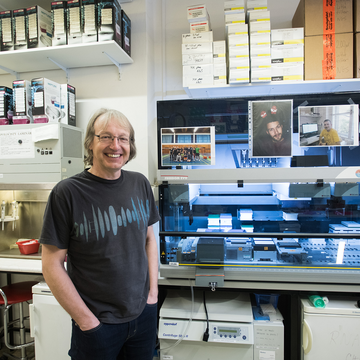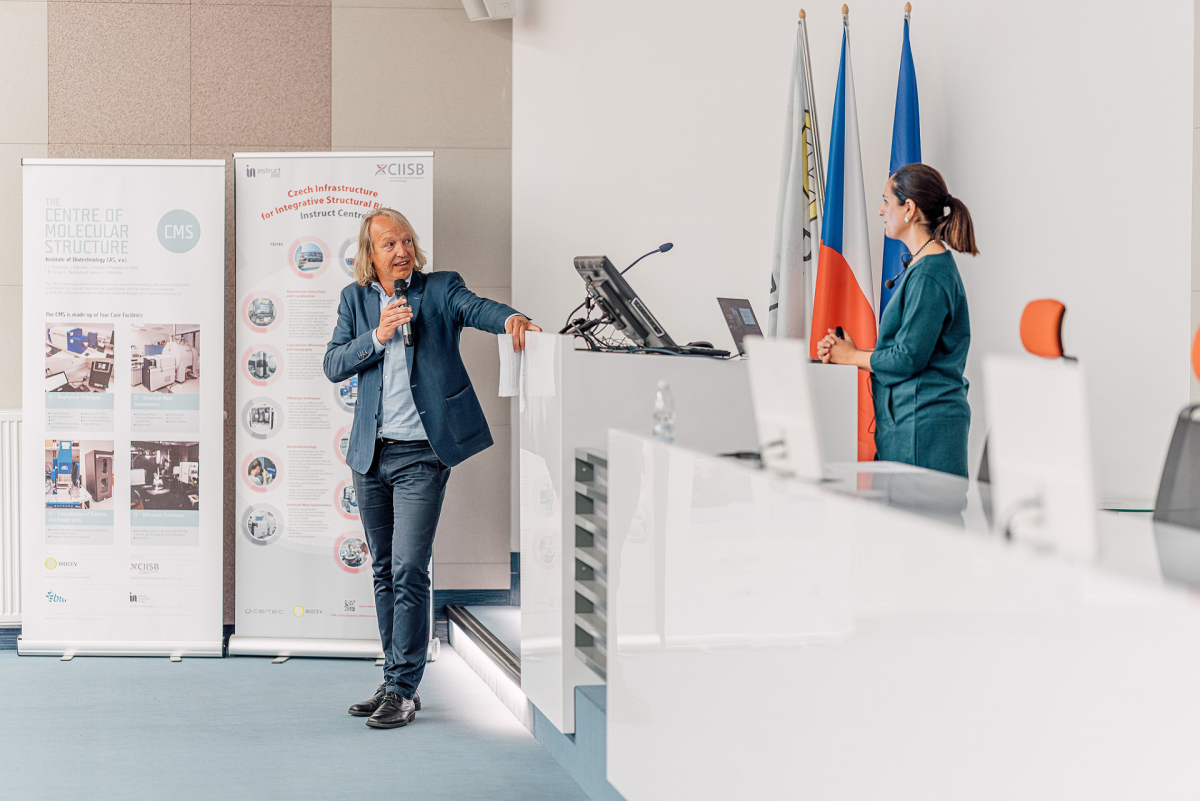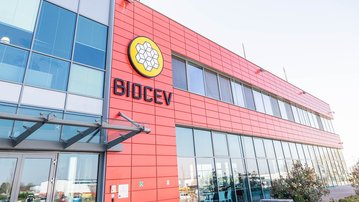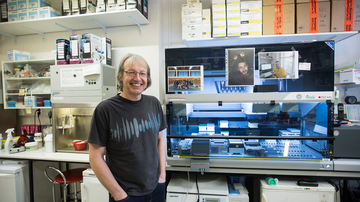
The Genetic and Molecular Basis of Human Diseases
Hundreds of Diseases, One Goal
We have presented four research programmes from the BIOCEV Centre in the Vesmír journal: Functional Genomics, Cell Biology and Virology, Structural Biology and Protein Engineering, and Biomaterials and Tissue Engineering. The fifth one is the Development of Diagnostic and Therapeutic Procedures. Professor Stanislav Kmoch from the 1st Faculty of Medicine, Charles University, introduces the programme.
How are the research teams “mixed”?
BIOCEV started as a contractual partnership of six institutes from the Academy of Sciences and two faculties of Charles University, the Institute of Molecular Genetics, the Institute of Biotechnology, the Institute of Physiology, the Institute of Experimental Medicine, the Institute of Macromolecular Chemistry, the Institute of Microbiology, the Faculty of Sciences and my alma mater, the First Faculty of Medicine. We all brought our own historical research and all continue to develop in the centre.
What is the role of the programme leader?
It is purely formal; the groups are independent; they are all managed by their home institutes. I don't tell them what to do, I don't manage them, I don't control them – neither in terms of research, nor economically. I only coordinated the groups during the period of preparing the sustainability programme; and I negotiate who will present us on various occasions. And I negotiate funds.
What does the shared roof of BIOCEV offer to the team?
We work in a sort of “joint household” whose members have to agree on the division of space, the sharing of equipment and the payment of electricity. However, shared facilities and modern equipment are a great advantage. A lot of young people and experienced researchers meet here and the environment gives rise to very fruitful connections – just as larger atoms or molecules are created when atoms collide. It is going to take a few years to materialize, but I consider it to be major added value for the centre.
I mean BIOCEV as a breeding ground for research.
Martina Živná from my team has just received the Neuron Award. She researches Fabry disease, a metabolic disorder that leads to multi-system damage to the kidneys, heart, and brain. It is very expensive to treat with recombinant enzymes, and this treatment is not successful for all patients. We already know that there is another mechanism at play – it is not related to enzyme deficiency, but rather cellular protein transport.
What else does your group do?
We research genetic metabolic diseases, particularly enzymopathies where a mutation results in a malfunctioning enzyme that disrupts the correct metabolic process. Phenylketonuria is an example. A mutation in the gene that encodes phenylalanine hydroxylase causes the enzyme to become dysfunctional; phenylalanine is not converted to tyrosine. Instead, it accumulates in the body and is toxic to the nervous system. We study the genetic causes of these diseases and their biochemical or molecular biological impact on cell structure and cellular pathways. We search for new targeted therapies to help patients.

Could you provide us with an example of a targeted therapy that is being applied based on your findings?
We have managed to define one group of kidney diseases caused by a mutation in the renin enzyme, and we have been able to start giving patients a synthetic supplement of aldosterone, which is the final molecule in the renin pathway. This eliminates the presence of the symptoms of this disease in patients. We have also examined one small molecule that will potentially be able to treat about fifty different genetic defects based on a common cellular pathophysiological mechanism. However, our role does not extend beyond this point, and the molecule has now fallen into the hands of bigger players, the pharmaceutical companies.
The MitoTam substance from Professor Jiří Neužil’s laboratory at the Institute of Biotechnology is now undergoing clinical trials. Which project is he in charge of?
Professor Neužil is head of the molecular cancer therapy project. His group does not research genetic diseases like we do, but instead, they research cancer, and they are looking for a common or general way to attack tumours. He focuses on the mitochondrial biology of tumours and is trying to discover molecules that cause problems for the mitochondria of cancer cells without harming healthy cells. And they have been successful.
Which project is next under the programme?
Iron metabolism of tumour cells, led by Jaroslav Truksa (the Institute of Biotechnology, Czech Academy of Sciences). His group is also focusing on cancer cells, but they do it differently, through iron metabolism. They target different cellular processes in a similar way: they play with cells and create cellular models to study the consequences of iron deficiency, necessary for cellular respiration. So again, they are trying to find something that will harm cancer cells rather than healthy ones.
But this line of research and projects continues.
The reproductive biology group under Dr. Kateřina Komrsková (the Institute of Biotechnology, Czech Academy of Sciences) is working on understanding the basic biological mechanisms of fertilization – how sperm communicates with the egg and what can prevent it. The discovery of individual factors, i.e. proteins and their variants, allows both for better diagnoses and for therapeutic interventions in the future. The group under Associate Professor Ondřej Havránek (the First Faculty of Medicine, Charles University), which is researching the tumour biology of lymphomas, is going in a very promising direction. But there are also other groups, molecular pathogenesis, expression profiling at the single cell level, clinical proteomics, the structure and function of the cell under normal conditions and pathology, the metabolism of healthy tissues and tumours with differentiation at the individual cell level. All of these groups are researching a particular pathology – at a high level, with the goal of understanding the molecular mechanism of diseases and influencing them for the benefit of patients.
Text: Eva Bobůrková
Image: Courtesy of Charles University and BIOCEV Archives


